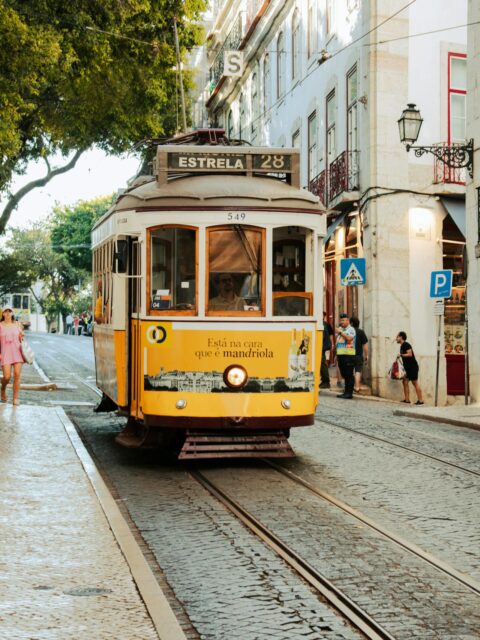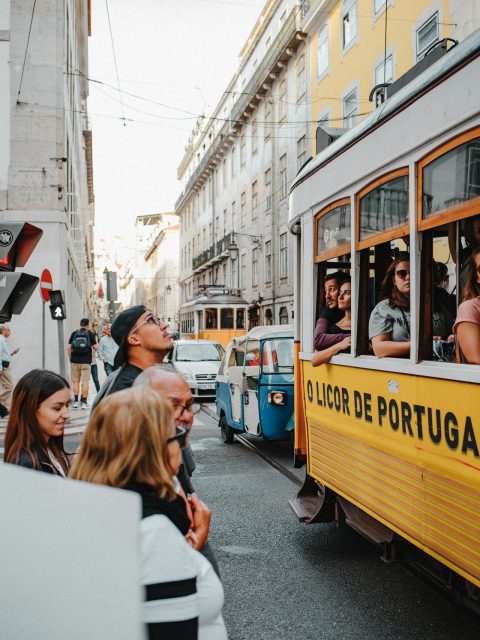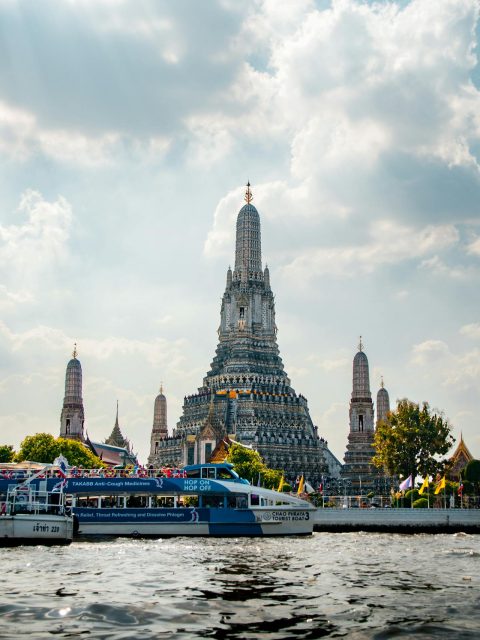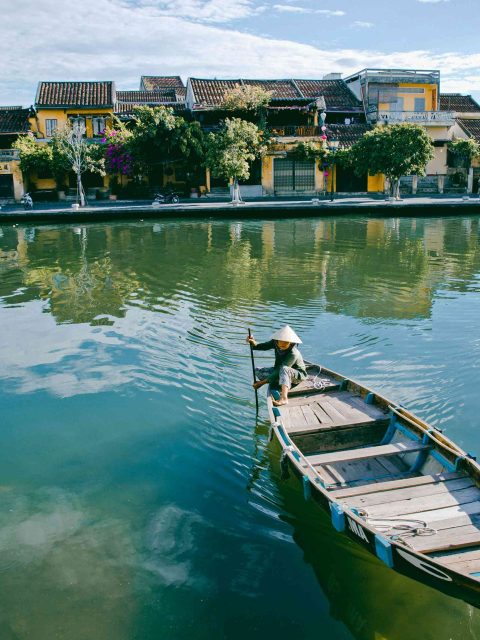Must-Know Portugal Travel Essentials and Tips
Planning a trip to Portugal? Make sure to read this before you go! In this guide, I’m sharing essential travel tips for Portugal, covering everything from must-visit places and must-try dishes to how to plan your budget. Whether you’re seeking Portugal travel essentials or looking for insider Portugal travel hacks, this guide provides the key insights for an unforgettable journey.
Portugal far exceeded my expectations in every way.
Before visiting, like many travelers, I had a general idea of what to expect from blogs, videos, and travel forums. I thought I knew how wonderful Portugal would be, but the reality was even better than I imagined. The food was delicious, the cities were stunning, and the beaches and mountains were breathtaking. What stood out the most, though, was the kindness and warmth of the locals, who made my trip even more special.
Because I fell in love with the country, I want to share my experiences to help you plan your own adventure. That’s why I’ve compiled some of the most important Portugal travel essentials you should know, along with my favorite Portugal travel hacks and practical travel to Portugal tips to ensure you make the most of your trip.
While this guide doesn’t cover everything, it highlights the key essentials I wish I had known before my visit. I hope it helps you prepare for an incredible journey and provides useful advice for both first-time travelers and those planning to return.
Chapters
- Portugal travel advice for first-time visitors
- 1. Best time to visit Portugal
- 2. Dealing with the Crowds in Portugal
- 3. How Long to Stay
- 4. Public Transportation in Portugal
- 5. Renting a Car in Portugal
- 6. Cell Phone Coverage
- 7. Food and Meal Times in Portugal
- 8. Language in Portugal
- 9. What to Take to Portugal
- 10. Planning a Trip to Portugal ( General Observations )
- Itinerary and Places to Visit
Portugal travel advice for first-time visitors
1. Best time to visit Portugal
I visited Portugal in August, and while I scored a great deal on flights, it wasn’t the most ideal time to visit. After experiencing the summer heat firsthand, I would recommend avoiding a trip during July and August, if possible. Although we didn’t face extreme heat every single day, temperatures in Lisbon often soared above 100°F, making outdoor sightseeing from noon to 5 p.m. quite difficult.
From my experience, I’d say that spring and fall are the best times to visit Portugal. These seasons offer milder weather, perfect for exploring cities and enjoying nature. However, if your main goal is a beach vacation, summer might still be a good option, with long, sunny days perfect for the coast.
If you have no choice but to visit during July or August, make sure to check the weather forecast daily and plan your activities around the peak temperatures. When I traveled, the weather was pleasant north of Lisbon, but in Lisbon itself, the heat was intense. We adjusted by starting our sightseeing early in the morning and scheduling indoor activities during the hottest part of the day.
2. Dealing with the Crowds in Portugal
Before heading to Portugal, I had read about the country’s growing popularity and how it was attracting more and more tourists, especially to the major cities.
After visiting during the high season, I can confirm that the crowds are definitely there. Lisbon, naturally, and Sintra were the most crowded destinations I visited. Famous landmarks like Sao Jorge Castle, Jeronimos Monastery, Belem Tower, Santa Justa Lift, and Pena Palace had incredibly long lines.
If you’re looking to escape the crowds, my advice is simple: venture outside of Lisbon. The further north you go, the fewer tourists you’ll encounter.
While in Lisbon, make a list of the must-see attractions and plan to visit them as early as possible in the day. Before my trip, I came across advice suggesting some places are better to visit after 3:00 or 4:00 p.m., but from my experience, that didn’t hold true. The earlier you arrive, the better. Also, ask yourself if waiting in a two-hour line under the sun is really worth it for some attractions. You don’t need to visit every famous spot to have an unforgettable trip.
Public transportation can also be a challenge due to the crowds. Be prepared for long waits for buses or trams, and don’t be surprised if finding a seat proves impossible.
Finally, arm yourself with patience and try to make the most of your day. Being surrounded by hundreds of people may not sound ideal, but it’s a reality at certain sites. Don’t let the crowds take away from your enjoyment.
3. How Long to Stay
When I visited Portugal, I spent 12 days there. While that gave me a good introduction to the country, it still wasn’t enough to see everything I wanted. Honestly, I could have stayed for an entire month and still not run out of things to explore.
Of course, deciding how long to stay is a personal choice, but in my opinion, you’ll need at least a week to get a solid feel of what Portugal has to offer. And trust me, you could easily double or triple that time and still find plenty to do and discover.
Remember, less can be more. It’s important to leave some space in your itinerary for spontaneous exploration and to truly enjoy the places you visit.
4. Public Transportation in Portugal
Public transportation in Portugal is both efficient and affordable. Buses and trains are the perfect options for getting around cities, taking day trips, and transferring to and from airports.
In addition to buses and trains, some cities offer trams, elevators, and funiculars. These options are especially useful for navigating hills or moving between lower and higher areas.
However, depending on the season, some public transport options can become quite crowded. Be prepared for longer waits and potentially standing during your ride.
To avoid the crowds, some people opt for tuk-tuks or golf carts (both of which are abundant in cities like Lisbon and Sintra). Keep in mind, though, that a one-way ride can cost you 10-12 Euros.
5. Renting a Car in Portugal
Renting a car offers a lot of flexibility. I don’t think we would have been able to explore as much without one. Plus, having a car allowed me to stay in more off-the-beaten-path, residential areas, which helped lower my accommodation costs.
That said, while I enjoyed having the freedom of my own vehicle, it wasn’t all smooth sailing. As I mentioned earlier, we paid $40 per day for the rental, and that price didn’t include fuel or tolls. The car was manual, as automatic rentals tend to cost significantly more.
Before Renting a Car ( Calculating the Total Cost )
Before deciding on renting a car, it’s essential to calculate the total cost of the rental, which includes several factors:
- Rental Price – This is the base price of the car rental, but there are other costs to consider.
- Fuel – In Portugal, a gallon of gas costs around $7-$8, almost double what we pay in California. Make sure to calculate how many miles (or kilometers) you can drive on a full tank of gas and compare that with the mileage expected for your road trip.
- Transponder for Tolls – In Portugal, there are two types of tolls: fully electronic ones and those that accept cash or card payments. Due to the electronic tolls, I highly recommend renting a transponder from the car rental agency (1.5-2 Euros per day of rental). If you don’t have a transponder, you will need to go to a post office to pay your tolls.
- Tolls – We paid about 30 Euros to drive between Porto and Lisbon. Refer to the previous section to see where we stopped along the way.
- Insurance – We used a credit card to cover the car insurance, but if you can’t cover it that way, factor in the cost of insurance.
- Excess – This is a very high amount (900 Euros in our case) that is held on your credit card in case anything happens to the car. You won’t actually be spending this money, as the hold is released once you return the car, but make sure your credit card has enough available credit to cover it.
- Extras – You may need to pay for additional items like car seats, a navigation system, or other extras.
Tips for Driving and Parking in Portugal
Having a rental car in the big cities doesn’t make much sense. We picked up our car when leaving Porto and dropped it off before arriving in Lisbon.
On a similar note, I don’t recommend driving a car around Sintra. It’s chaotic. We parked the car at an area called Portal de Sintra and used public transportation to get around.
The roads in Portugal are excellent, but they have a lot of roundabouts. Make sure you’re familiar with how to navigate them.
Parking can be tricky in some beach towns. The lines to get a spot can be crazy, so the trick is to arrive early (before 9:00 a.m.) to secure a spot.
Don’t rely entirely on your rental’s navigation system. I found ours difficult to use and inaccurate. Many times, we couldn’t enter a specific address, and on several occasions, it sent us off course. It even directed us against traffic three times. Make sure to have a backup plan, like a cell phone with data.
6. Cell Phone Coverage
When I arrived in Portugal, I stopped by the Vodafone store at Porto airport to pick up a SIM card. I got a card with 30 GB of data, valid for two weeks, for just 15 Euros. You can also get a combination of voice and data for similarly low prices.
To use the SIM card, you’ll need an unlocked phone. Make sure to get the unlocking code from your service provider (or former provider) before you leave your home country.
Before leaving the Vodafone store, make sure to test the SIM card. In my case, the internet wasn’t working on my phone, but an employee was able to fix the issue before I left.
7. Food and Meal Times in Portugal
You’ll eat like royalty in Portugal! Everything I tried was absolutely delicious.
If you’re near the coast, get ready to indulge in fish and seafood dishes. The variety is impressive, with numerous different preparations, house specialties, and a wide range of seafood to choose from. Common side dishes include potatoes and green salad.
Codfish is the most popular fish, and you’ll find it featured in dishes everywhere. But don’t worry if seafood isn’t your thing, beef, sausages, and pork specialties are widely available too.
One thing that surprised me was the number of bakeries and the incredible selection of pastries in Portugal. It’s hard to believe people stay so fit with so much sugary goodness everywhere!
You’ve probably heard of the famous pasteis de nata. They’re little bites of heaven, and trust me, it’s easy to eat one (or more) every single day!
But there’s so much more to Portuguese desserts than just pastel de nata. Every region and city has its own sweet specialty. With so many varieties, it’s hard to fit them all into one bakery. So, if you have a sweet tooth, Portugal is the destination for you!
Wine is another essential part of Portuguese culture. While port wine tends to dominate conversations, the country also produces excellent table wines. And remember, the Portuguese love their sweets, so each region seems to have its own sweet wine or liqueur as well (for example, Moscatel de Favaios, Moscatel de Setubal, Ginja, and Carcavelos).
Let’s not forget about Vinho Verde (green wine), a unique wine category that the Portuguese have mastered. When you ask for the house wine, you’ll likely be served vinho verde, which pairs perfectly with seafood and has a light fizz that’s refreshing on a hot day.
As for mealtimes, breakfast in Portugal is typically simple, consisting of a pastry or a piece of bread and a coffee. Some small restaurants and snack bars serve small sandwiches or tostas (toasted sandwiches), but I felt these spots were mainly catering to tourists.
Lunch is typically served between 12:00 p.m. and 4:00 p.m. After 4:00 p.m., restaurants close until 7:00 p.m., and during this time, you’ll mostly find snacks like codfish fritters, croquettes, tostas, and bifanas (pork sandwiches). Of course, cakes and pastries are always available too!
8. Language in Portugal
If you’re an English speaker, learning a few phrases in Portuguese will certainly help improve your communication with locals.
I wasn’t able to fully assess the level of English spoken by locals because I barely spoke English myself during the trip. As a Spanish speaker, I preferred to use Spanish and the little Portuguese I knew. These two languages were enough to get me through most situations. If you speak a Romance language, you shouldn’t have many issues navigating Portugal.
That being said, my guess is that English is commonly spoken, though perhaps not as widely as in countries like Germany, Austria, or Switzerland. In fact, Portugal is one of the places in Europe where I heard less English spoken overall. Portuguese, Spanish, and French were the dominant languages in many areas.
9. What to Take to Portugal
I like to pack light, so I didn’t bring too much to Portugal, but what I did take was enough to make my trip comfortable.
Since I visited during the summer, I packed several dresses, a few blouses, and a pair of pants to mix and match. I also brought a jacket because you never know when cooler weather might catch you off guard.
In addition, I packed a hat, sunglasses, plenty of sunblock, and chapstick. I also had a moisturizer with SPF for my face.
One of the most important things you’ll need is a good pair of shoes. I brought two pairs of sandals, but unfortunately, one didn’t hold up to the rough terrain. Some parts of Portugal, especially in Lisbon, have uneven pavements and cobblestones. The sandals with a platform didn’t feel safe I constantly felt like I might fall. Plus, many sidewalks in Lisbon are slippery. I ended up relying on my Teva sandals, which had a stable sole and strong grip, to get me through.
10. Planning a Trip to Portugal ( General Observations )
Portuguese people will go out of their way to make sure you’re doing well. If you need help, don’t hesitate to ask.
During my travels, I’ve encountered all kinds of people trying to scam tourists. However, in Portugal, I found that people generally aren’t interested in taking advantage of visitors. If a dish is large enough for two people, they’ll tell you. If it’s more cost-effective to order one item over another, they’ll let you know.
Credit cards are widely accepted, and it’s easy to get by with small amounts of cash.
One issue I encountered was trying to get change for a 50 Euro bill. Many places were reluctant to accept it. If you get one from an ATM, work on getting it changed as soon as possible.
Another odd thing we noticed: we were offered drugs multiple times while walking around the cities. Just don’t accept these offers. Seriously!
So, those are my observations about Portugal. I hope you find them useful as you plan your trip. Feel free to reach out if you have any questions.
Itinerary and Places to Visit
To help you plan your itinerary, here’s a breakdown of the places I visited and how long I stayed in each:
- Porto (2 days) – Porto, the most popular city in the north, surprised me with its amazing food, excellent wines, stunning views, impressive bridges, and beautiful architecture. While some say you only need a day, I’d recommend staying for 2 to 3 days. Dedicate one day to sightseeing and another to fully enjoy the food and wine scene.
- Douro Valley (1 day) – You absolutely must visit the Douro Valley! The beauty of this region is breathtaking. We visited through a guided tour from Porto, which, while a bit pricey, was worth every penny. With transportation, logistics, and reservations taken care of, we could relax and enjoy each stop – and every stop was exceptional.
- Aveiro (half day) – Known as the “Venice of Portugal,” Aveiro boasts numerous canals that you can explore aboard a traditional boat called a “moliceiro.” Aside from the canal tours, you can walk around the charming town center, visit the salt pans, check out the market, and don’t miss tasting the ovos moles, a local sweet treat.
- Coimbra (half day) – This charming town, located along the Mondego River, is famous for hosting one of Europe’s oldest universities. The university itself is a must-visit (it looks like a palace). In the late afternoon, strolling through the medieval quarter is the best way to soak in the local atmosphere, with its small restaurants, wine bars, and specialty shops.
- Tomar (4 hours) – Tomar is a delightful small town, but most visitors come to see the Convent of Christ, an impressive monastery built by the Knights Templar. We also tried to visit the Almorol Castle but found it closed during midday.
- Batalha (2 hours) – Another awe-inspiring monastery that can be toured in a couple of hours. The Unfinished Chapels here were particularly jaw-dropping.
- Nazare (1 day) – I completely fell in love with Nazare! We spent one evening exploring the upper part of the town and the fort, and the next day in the lower part of town. It’s the perfect place to relax and unwind.
- Obidos (2.5 hours) – This medieval town boasts a beautiful castle, a charming main street, bookshops, and plenty of viewpoints. You can even walk along the castle walls – but it’s not for the faint-hearted! While you’re there, try the famous Ginja, a cherry liqueur served in a chocolate cup (which you can eat after drinking!).
- Sintra (1 day) – One of the most popular destinations in Portugal. In one day, we managed to visit Pena Palace, the Moorish Castle, and Quinta da Regaleira. However, one day is definitely not enough. I had originally planned for two days but decided to change my plans after encountering the large crowds.
- Cascais (1 day) – A premier beach resort town near Lisbon. There’s plenty to see and do here for a full day, and you can also visit attractions like Boca do Inferno, Praia do Guincho, and Cabo da Roca.
- Lisbon (3 days) – The capital city has everything: a castle, viewpoints (miradouros), markets, old neighborhoods, parks, museums, a wide variety of restaurants, and easy access to the sea. There are also countless options for tours, activities, and day trips.
I could have easily spent more time in each of these places. There’s just so much to see, experience, and absorb. Keep that in mind when planning your own trip to Portugal.
As mentioned before, the possibilities for expanding your itinerary are endless. I wish I had more time to visit Guimaraes and Braga in the north, the Bussaco Forest, Peniche, Ericeira, Mafra, Evora, Arrabida Natural Park in the central region, and the Algarve Coast in the south.
Lunch and Dinner – For most meals, we paid between 10-15 Euros per person. This included a beverage, appetizer, tax, service, and cover, making it quite a reasonable price. We mostly ate fish and seafood, which I think was a fantastic deal. For non-seafood dishes, the price dropped to around 6-7 Euros.
Attractions – Most attractions had an entrance fee of around 10 Euros. Some of the palaces in Sintra cost more, and if you visit several in a single day, the costs can add up quickly. Choose what you want to see carefully. Personally, I don’t believe you need to visit every attraction (sometimes just viewing from the outside is enough), but a few places are absolutely worth the money.
Tours – I only booked two tours: one to the Douro Valley (€90 per person) and another to the port lodges of Vila Nova de Gaia (€40 per person). While not the cheapest activities, we would have paid much more for similar tours in other Western European countries.
Public Transportation – A single metro ride costs about 1 Euro. A daily pass, which includes metro, buses, trams, and lifts, is priced at 5-6 Euros.
Car Rental – For a 5-day rental, we paid €200, or roughly €40 a day. This was the cheapest option I found during the high season, and I booked it three months in advance. Be sure to factor in the costs of fuel, tolls, and a transponder rental. If you’re looking to save money, skip the car rental altogether!
Long-Distance Train (Lisbon to Madrid) – You can purchase tickets for as low as 25 Euros, but make sure to book well in advance to secure this price.
Uber – We used Uber only once, for our trip to Porto’s airport. The price was reasonable, but public transportation is definitely cheaper.
Souvenirs – If you’re looking to take home a piece of Portugal, there are plenty of great options at affordable prices. Personally, I prefer focusing on items that are both practical and locally made.
ATM Fees – I noticed that Portuguese banks were charging up to 5 Euros for ATM withdrawals. I don’t recall seeing such high fees in other countries, so it’s a good idea to limit the number of times you withdraw cash during your trip.














